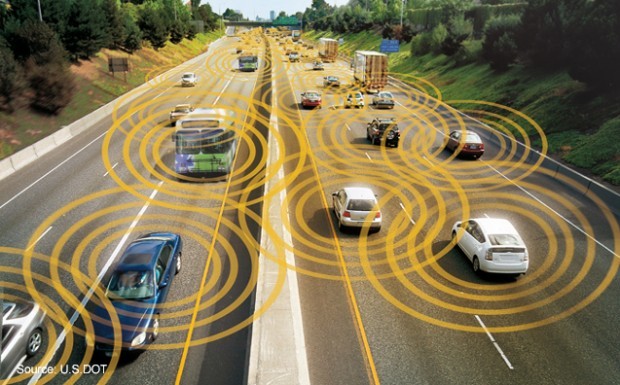The U.S. personal auto insurance sector could shrink by 60 percent within 25 years as autonomous vehicles catch on, vehicles become safer and both trends reduce the number of accidents, KPMG said in a new report.
At the same time, insurers have been quick to respond to anticipated market changes when driverless technology takes hold.
KPMG’s prediction: There could be as much as an 80 percent potential reduction in accident frequency by 2040 if auto and safety trends continue. If this happens, loss costs and premiums could drop drastically, though accident expense could hit $35,000 on average, up from $14,000 now.
If the market shrinks, then consolidation and more competition would follow, KPMG said.
“The risk profiles of vehicles is changing daily, and the subsequent drop in industry loss costs would reduce the size of the auto insurance market, trigger consolidation in the personal lines space, attract new competitors, and force dramatic operational changes within carriers,” Jerry Albright, principal in KPMG’s Actuarial and Insurance Risk practice, said in prepared remarks.
KPMG, based on a survey of insurance company senior executives for this report, found an industry skeptical that such a transformation would happen anytime soon. The firm noted that few carriers have taken action to develop policies that would address the autonomous vehicle landscape, because “most believe the change will happen far into the future, if at all.”
Most respondents, for example, said they don’t expect driverless technology to have a major impact on their business over the next decade Nearly half, however, said they see it having an impact 11 or more years into the future.
“This point stands in contrast with the pace of change we anticipate,” KPMG said in the report.
KPMG identified eight elements it said could propel the shift to autonomous vehicles, and the resulting change in the personal auto insurance sector:
- Integrity of technology. This would be a convergence of already existing technologies that helps generate mass adoption of driverless autos.
- Capability accessibility. KPMG said that Google, Tesla, Apple and other high-tech companies are jumping ahead to fully autonomous vehicles. But traditional manufacturers are not that far behind, with each new auto model including more autonomous driving technology elements.
- Infrastructure availability. While initial driverless technology enables use of exiting roads, KPMG predicts that road infrastructure will become “smart” – communicating with vehicles to enable more sophisticated driverless autos.
- Regulatory permission. As of early 2015, 16 states including the District of Columbia passed or introduced bills relating to self-driving autos. California, Michigan and Nevada are likely to follow. U.S. regulatory agencies are gathering data on what standards to require for these vehicles.
- Legal responsibility. KPMG said that legal issues regarding who is responsible in a driverless vehicle when an accident occurs will likely be resolved along with advances in autonomic driving technology. KPMG said insurance companies can develop policy covers that protect manufactures of driverless vehicles and individuals who use them.
- Consumer adoption. KPMG found that consumers will embrace autonomous vehicles once they understand potential benefits of the technology, such as multitasking, faster commutes, safer travel and more independence. The key to broader adoption, then, is consumer education and awareness.
- Mobility services. Driverless vehicles could have an implication on ride hailing, with downward pressure on their numbers due to efficiency of usage.
- Data management. Autonomic driving generates and needs large amounts of data, and KPMG expects this to grow rapidly as the interaction between vehicles, infrastructure and other data sources grows. Data management, storage, analytics and security will be critical to helping autonomous vehicles to become mainstream.
If these eight elements can be realized, KPMG said that it envisions four potential phases taking place that would ramp up widespread, and broader adoption of autonomous vehicles. They are:
Training wheels, or the introduction to driverless vehicles as manufactures roll out some of the early versions and underlying technology. High-tech companies, meanwhile, are showing interest in fast-tracking production of fully autonomous vehicles.
First gear. Partial autonomous driver technology could come out by 2017, allowing a wide range of consumers to experience the technology and see how safe and reliable it can be, shifting market perceptions. Regulatory standards for vehicle-to-vehicle communications will follow.
Acceleration. KPMG said that fully autonomous vehicles could become more common within five years, with technology enabling the likely embedding of vehicle to vehicle communications in all new vehicles. Wider scale of this technology would drive down costs and make it more widely available.
Full speed, with a broad use of autonomous driving technology hitting by 2025. At this point, all new vehicles could have autonomous driving capabilities, with existing vehicles getting retrofitted. Through the next 15 years after that, the autonomous driving landscape could become more sophisticated, with integrated autonomous driving, where vehicles can also communicate with each other. If this can be achieved, KPMG said it sees “a new normal” hitting by 2040.
The KPMG report is called “Marketplace of Change: Automobile Insurance in the Era of Autonomous Vehicles.”
Source: KPMG





















 Former MLB Player Charged With Insurance Fraud in Florida
Former MLB Player Charged With Insurance Fraud in Florida  Viewpoint: You’re at a Competitive Disadvantage If You’re Not Innovating
Viewpoint: You’re at a Competitive Disadvantage If You’re Not Innovating  Progressive Gains as Drivers Shop Around for Auto Insurance—Again
Progressive Gains as Drivers Shop Around for Auto Insurance—Again  That Insurance Talent Crisis? It’s a Global Knowledge Opportunity
That Insurance Talent Crisis? It’s a Global Knowledge Opportunity 











